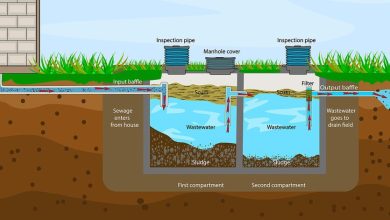How To Identify Roof Leaks

Many things can cause leaky roofs. The most apparent sign of a leaky roof is one that causes your ceiling to fall to the ground and water to seep into your bedroom or kitchen. However, roof leaks can be much more subtle. These leaks can cause irreparable damage that you may not be able to see immediately.
Effects of heavy rain on roofs
Heavy rains can silently erode the waterproofing components and materials, no matter how old your roof is. This year’s heavy rains could cause damage to your flashing or shingles.
If you don’t clean your gutters frequently, water can pool near roof edges or drip down around your foundation, causing damage. But, again, planning for the worst is better than hoping for the best regarding your roof.
Indoor signs that your roof is leaking
Roof leaks eventually show indoor signs. Contact your roof professionals if you see:
- Health issues – Cold symptoms such as itchy eyes, watery eyes, or runny noses that don’t go away could indicate moisture damage or mold growth from a leaky roof.
- Moisture Deterioration – Moisture damage could include paint chipping or rusty pipes.
- Mold – Mold often indicates a problem. Mold is not always contained within the affected area. Some people have a sense that smells mold and can identify it without any visible signs. Look beyond walls and ceilings if your home exhibits a mild “mildewy” or a tendency to increase in damp weather.
- Spots or stains – A water stain is typically very subtle and surrounded by a darker brown color. Some water spots or stains are harder to spot, especially in dark corners and near ceilings. It would help if you immediately investigated any discoloration on your ceiling or walls
- Water drips – Indoor drips and wall moisture are red flags. But, even if the drip is gone, it can still cause costly and unseen damage.
Outdoor signs to identify a roof leak
It is simple and practical to inspect your home from the ground. Look outside. Do you see any signs outside that a roof problem is occurring?
- Tree limbs – Overhanging branches and limbs can cause roof damage and leaks. Therefore, you should always trim trees.
- Broken or loose vent pipes boots – These water-prevention seals are known as “boots” and should be replaced before roof replacement.
- Gutters and downspouts – Poorly maintained gutters often cause leaky roofs. Pooled water and clogs can cause roof underlayment damage and damage to shingles or tiles. Another sign is a gutter pulling away from your home.
- Exposed flashing or underlayment – Roof leaks are usually caused by damaged or improperly installed flashing. You can see the signs of flashing metal or steel around roof edges and between shingles from the ground. If you notice damage, repairs are required.
- Broken or missing shingles – It is essential to act fast if you see loose shingles near chimneys or vents. You might have water leaking between your roof and the ceilings.
- Water spots at the roofline. – Water spots indicate roof leakage.
- Vegetation – Climbing vines or mossy exteriors are attractive, but they trap moisture and can cause damage to your roof or downspouts.
What to do next?
If you have seen any of these signs, your roof may be leaky. What should you do? Contact a roofing contractor, such as Roof and Siding Repair Framingham MA, with a track record in your area to repair your leaky roof. For a better quality job, you want a roofing company with experience and accountability. In addition, you need roofing professionals who are more concerned about your needs than their bottom line. As such, research the available contractors around your area before deciding.


